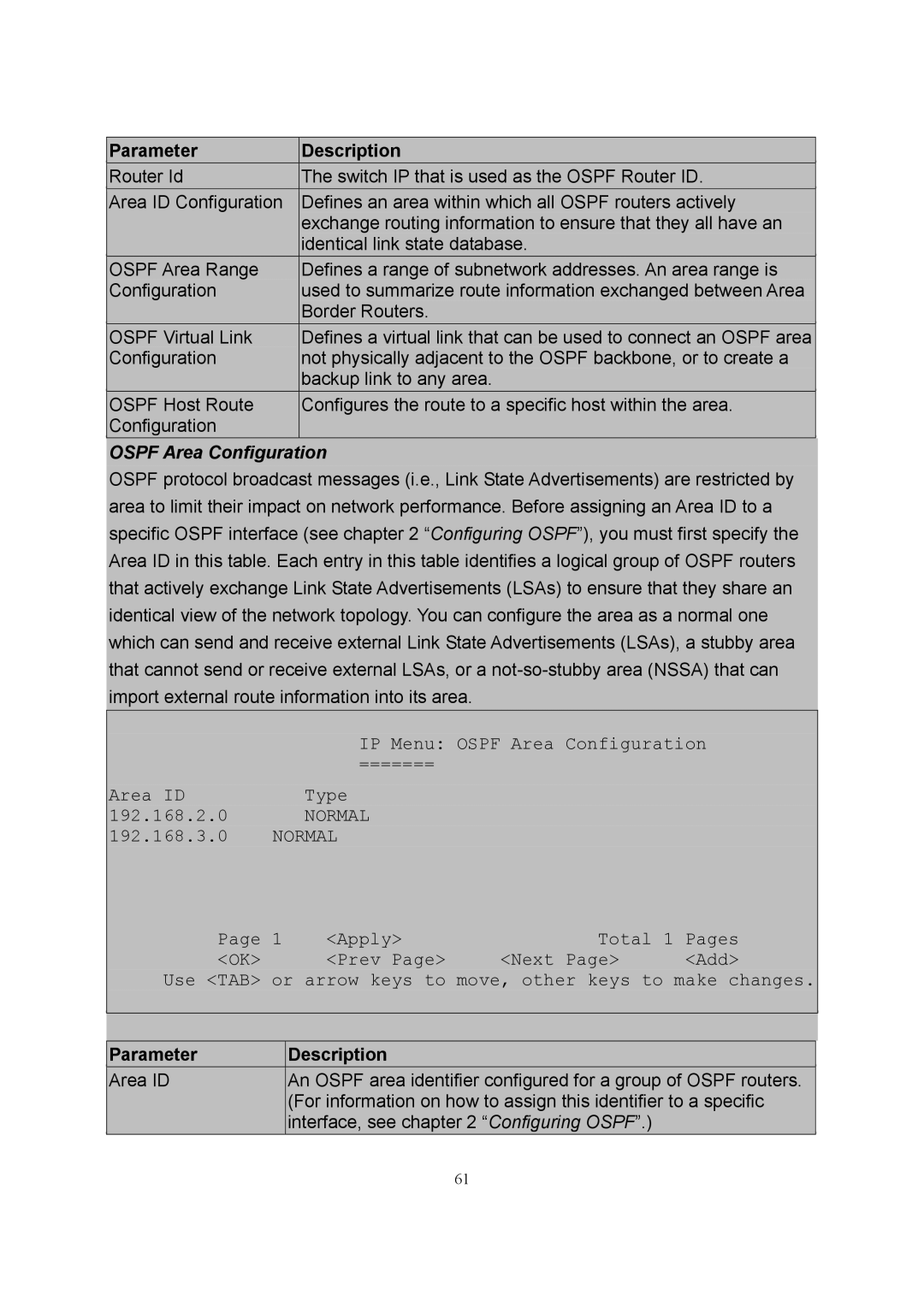
| Parameter | Description |
|
|
| ||
| Router Id | The switch IP that is used as the OSPF Router ID. |
|
| Area ID Configuration | Defines an area within which all OSPF routers actively |
|
|
| exchange routing information to ensure that they all have an |
|
|
| identical link state database. |
|
| OSPF Area Range | Defines a range of subnetwork addresses. An area range is |
|
| Configuration | used to summarize route information exchanged between Area |
|
|
| Border Routers. |
|
| OSPF Virtual Link | Defines a virtual link that can be used to connect an OSPF area |
|
| Configuration | not physically adjacent to the OSPF backbone, or to create a |
|
|
| backup link to any area. |
|
| OSPF Host Route | Configures the route to a specific host within the area. |
|
| Configuration |
|
|
|
|
|
|
OSPF Area Configuration
OSPF protocol broadcast messages (i.e., Link State Advertisements) are restricted by area to limit their impact on network performance. Before assigning an Area ID to a specific OSPF interface (see chapter 2 “Configuring OSPF”), you must first specify the Area ID in this table. Each entry in this table identifies a logical group of OSPF routers that actively exchange Link State Advertisements (LSAs) to ensure that they share an identical view of the network topology. You can configure the area as a normal one which can send and receive external Link State Advertisements (LSAs), a stubby area that cannot send or receive external LSAs, or a
IP Menu: OSPF Area Configuration
=======
Area ID |
| Type |
|
|
|
192.168.2.0 |
| NORMAL |
|
|
|
192.168.3.0 | NORMAL |
|
|
| |
Page 1 | <Apply> | Total 1 Pages | |||
<OK> |
| <Prev Page> | <Next Page> | <Add> | |
Use <TAB> or arrow keys to move, other keys to make changes. | |||||
|
|
|
|
|
|
|
|
|
|
|
|
Parameter |
| Description |
|
|
|
Area ID |
| An OSPF area identifier configured for a group of OSPF routers. |
| ||
|
| (For information on how to assign this identifier to a specific |
| ||
|
| interface, see chapter 2 “Configuring OSPF”.) |
|
| |
|
|
|
|
|
|
61
